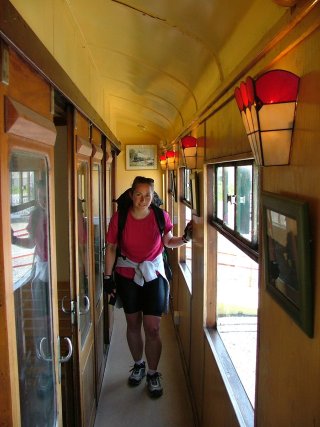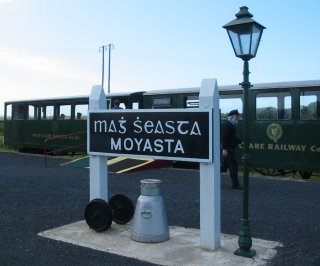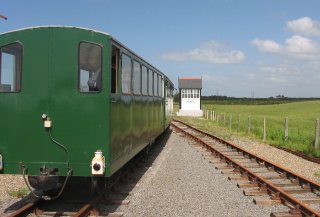 |
20. Restoration and Survival |
|||
|
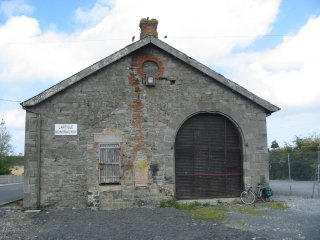 |
Before leaving Listowel, we had to (I said) find the Lartigue Monorailway, which is mentioned on a tourist information board in the town square. And we did, though all we could do was peer at it through the fence. Originally developed for use in Algeria, where blowing sand would soon obliterate a conventional track ('We apologise for the delay which is due to the wrong type of sand on the line.'), the system found its only other realisation in Kerry. The track is like a line of trestles knocked up by a local blacksmith. The engine, with six driving wheels, and carriages sat astride the top rail. This monorail connected Listowel and Ballybunion (10 miles), and operated from 1888 to 1924. There is a restored train which operates on this 500 metre section of track, but not when we were there. For further information visit the Lartigue website (link correct on 30th June 2004). At Bedford Cross Roads on the R552 north of Listowel we turned east on a minor road, and then north at Gurney's Crossroads, continuing more or less directly north until we met the R551 about 3 miles south-west of Tarbert. On the way we passed peat bogs which are still being worked, within ten miles of the Tarbert (oil, 620Mw) and Moneypoint (coal, 915 Mw) power stations. |
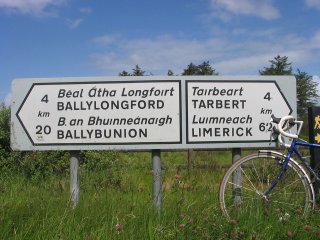 |
The crossing of the Shannon was less eventful than before (see page 5) because the dolphins did not come out to play. We cycled to Kilrush and then Kilkee, but more of that on page 21. On the way we stopped at the West Clare Railway. |
|
'Are you right there, Marie, are you right?' |
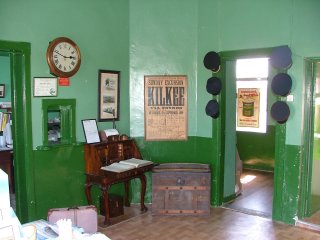 |
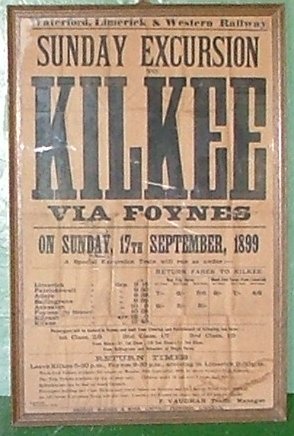 |
Despite the ramshackle image, in its heyday you could buy a through ticket to any station in England or Scotland from Moyasta Junction or any other station on the West Clare Railway. |
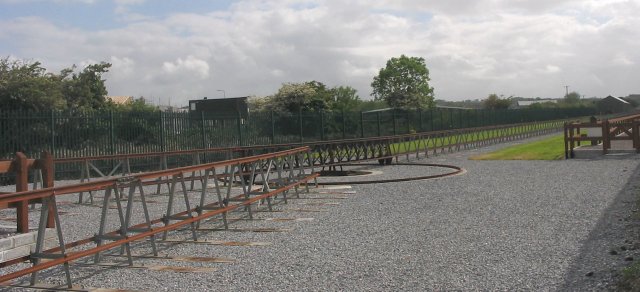 |
|||
The restored section of the Lartigue Monorailway and, left, the engine shed. |
|||
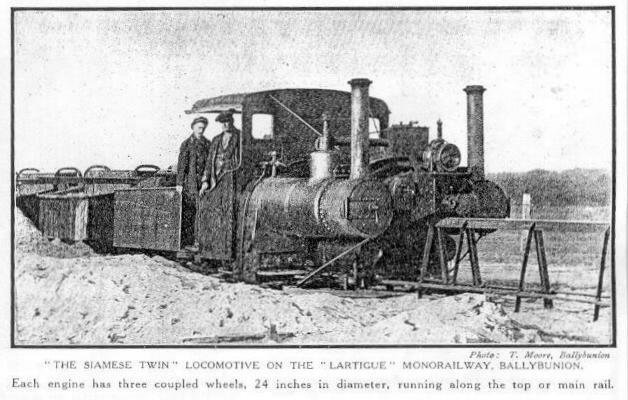 |
|||
Image above reproduced from Lartigue website with permission of Frank McNerney. |
|||
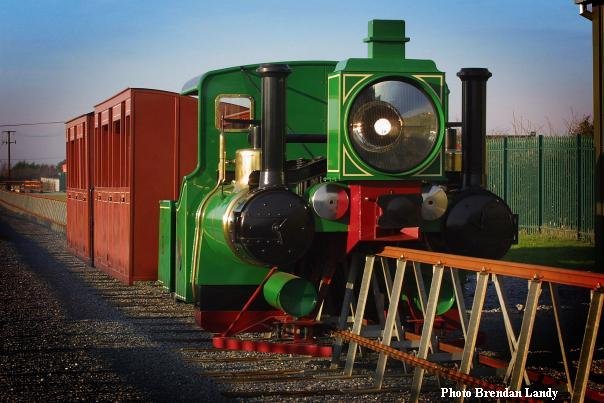 |
|||
Image above reproduced from Lartigue website with permission of Frank McNerney. |
|||
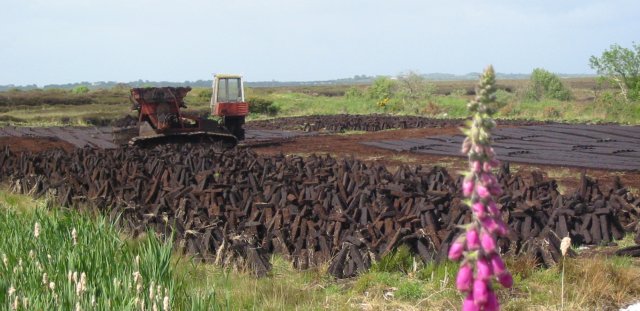 |
|||
|
|||
Turf cutting south-west of Tarbert. |
|||
|
|||
The West Clare Railway at Moyasta Junction. |
|||
The west of Ireland is full of the traces of old railways (for instance, the sleeper-fenced picnic areas at Ballyheige and the footbridge at Fenit). The West Clare Railway restoration can be found at Moyasta Junction, on the road between Kilrush and Kilkee. It operated from 1887 until in 1961 it was axed in Ireland's version of the Beeching rationalisation. It ran from Ennis by Corrofin and Ennistimon to Lehinch on the Clare coast, and then south through Milltown Malby, Quilty, Kilmurry, Doonbeg, and Sragh to Moyasta Junction, whence one branch led to Kilkee and another to Kilrush and Cappa Pier. There is a website (of course): West Clare Railway (link correct on 30th June 2004). The railway was immortalised by Percy French (1854-1920, author of 'The Mountains of Mourne') in his song 'Are you right there, Michael, are you right?' (1902), whose refrain consists of variations on this theme: 'Are ye right there, Michael? Are ye right? Percy French was late for a concert on account of a delayed West Clare train. He sued the railway company, successfully, and then lampooned it in this song. The publishers are Pigott & Co., Grafton Street, Dublin. It
is copyright, but since the words are freely available on other
sites I have included them here, on the next page. And there is
a man at Moyasta Junction who can be persuaded to sing it to you. |
|||
 |
20. Restoration and Survival |
|||
|




